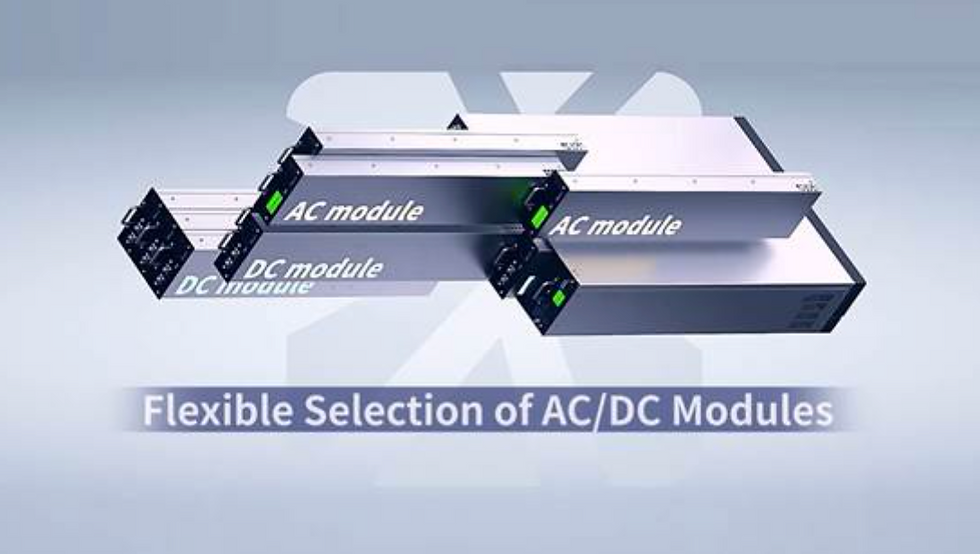Advantages of ATE System Power Supplies with Architectural and Structural Scalability through Modular Design
- Danielle Trigg

- Jul 22
- 2 min read

ATE (Automated Test Equipment) system power supplies are programmable power sources, electronic loads, or sometimes bidirectional units that interact with the Device Under Test (DUT). These power supplies provide dynamic and programmable power flow, enabling validation of DUT performance, safety, and compliance with application-specific or regulatory standards.
As technology continues to evolve—for instance, electric vehicle batteries have progressed from 400V to 800V and even 1200V power systems—the power requirements of DUTs grow significantly. This poses a challenge for legacy ATE setups: the power supply implemented at the early stages of R&D may no longer meet the demands of next-generation DUTs. Therefore, from the initial stage of procurement, power test systems should be architected with scalability and future-proofing in mind.
Why Non-Modular Designs Fall Short
Although discussed earlier, it's important to emphasize that monolithic or non-modular power supplies are inherently limited in scalability due to their fixed design architecture. They come with several critical drawbacks:
· Lack of Scalability and Rigid Power Limits
A monolithic PSU is designed for a specific voltage/current range (e.g., 0–20V, 0–50A). When new test requirements arise—such as increased current demand—the entire unit may require replacement, resulting in high costs and waste.
· Single Point of Failure – No Redundancy
In monolithic systems, a failure in the PSU causes the entire test bench to shut down, halting the entire validation process.
· Extended Downtime and Maintenance Complexity
Repairs or replacements require shutting down the complete test system, resulting in significant downtime—especially critical in high-throughput or 24/7 operations.
How Modular ATE Power Supplies Offer Architectural and Structural Scalability
Modular ATE power supplies consist of standardized units (e.g., 500W per module) that can be configured in series or parallel to meet evolving power requirements:
· Parallel Configuration for High Current
Ideal for EV battery testing and high-power DUTs. Multiple modules can be paralleled to deliver kilowatts of output power efficiently.
· Series Configuration for High Voltage
· Suitable for power semiconductor validation, where high voltage testing is essential. Modules are stacked in series to achieve the desired voltage.
· Digital Control and Load Balancing
Communication protocols like PMBus enable automated voltage/current sharing across modules without manual jumper settings, enhancing precision and reliability.
· Modular Redundancy (N+1 Design)
In critical environments such as wafer testing or mission-critical electronics validation, N+1 redundancy ensures uninterrupted operation. If one module fails, the system automatically redistributes the load, maintaining continuity within milliseconds.
· Hot-Swap Maintenance
Modules can be replaced, upgraded, or expanded without powering down the system—critical for minimizing downtime in continuous production or high-utilization labs. Features like blind-mate connectors and electronic latches further simplify maintenance.
Conclusion: Scalability Is Not Optional, Rather Something Strategic
In modern R&D and validation workflows, where DUT evolution outpaces traditional power supply capabilities, architectural scalability is not merely a nice-to-have - it's a strategic imperative.
Modular ATE system power supplies such as those manufactured by ActionPower empower engineering teams to adapt quickly to new test requirements, reduce downtime, and maximize ROI over the product lifecycle. Whether testing next-gen EV batteries, power semiconductors, or renewable energy systems, a modular approach ensures your ATE infrastructure remains future-ready and operationally efficient.
















